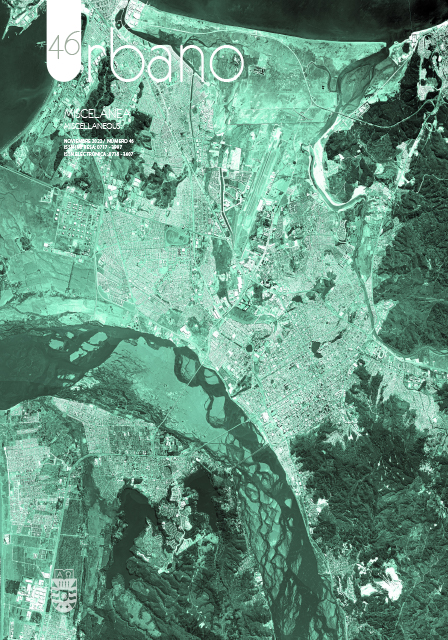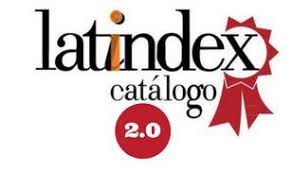Aproximación a la política pública de protección del patrimonio urbano en Colombia en clave del path dependence (1954-2019)
DOI:
https://doi.org/10.22320/07183607.2022.25.46.06Palabras clave:
patrimonio urbano, path dependence, política urbana, protecciónResumen
El patrimonio urbano es una categoría del patrimonio cultural. Los centros históricos están protegidos por un marco jurídico que salvaguarda los valores que son objeto de la declaratoria correspondiente. El estudio de la política de protección del patrimonio urbano en Colombia ha estado limitado por la perspectiva clásica. En contraste, esta investigación realiza un estudio de caso sobre la legislación de conservación y los centros históricos declarados en Colombia como BIC del ámbito nacional, entre 1954 y 2019, desde el institucionalismo histórico. La metodología empleada es el Esquema de Aplicación del Path Dependence (EAPD), que se orienta a reconocer las relaciones entre variables, periodos y trayectoria del objeto de estudio, para demostrar la hipótesis de este trabajo: el surgimiento del patrimonio urbano y los mecanismos de protección se debe al agotamiento de la ley e ideas del patrimonio histórico. Las conclusiones preliminares evidencian cinco periodos de evolución de esta temática y enfatizan la dependencia mutua del patrimonio urbano y la política de protección, como también la reciente emergencia de la participación ciudadana, la pérdida de flexibilidad y versatilidad del marco legal con manifestaciones de irreversibilidad en la conservación del patrimonio urbano.
Descargas
Citas
ARTHUR, B. (1989). Competing technologies, increasing returns, and lock-in by historical events. The Economic Journal, 99(394), 111-131. DOI: https://doi.org/10.2307/2234208
BARBOSA, J. (2001). Políticas para el patrimonio cultural inmueble en Colombia. En Calvo, A. (Comp.), Políticas y gestión para la sostenibilidad del patrimonio urbano (pp. 79-90). Bogotá: Centro Editorial Javeriano
BEUF, A. Y MARTÍNEZ, M. (2015). Colombia: centralidades históricas en transformación. Bogotá: Instituto Distrital de Patrimonio Cultural.
CARRIÓN, F. (2000). Centro histórico: relación social, globalización y mitos. En Carrión, F. (Eds.), Desarrollo cultural y gestión en centros históricos (pp. 179-192). Flacso.
COULOMB, R. (2015). Construyendo utopías desde el centro. En Coulomb, R. (Ed.), México: centralidades históricas y proyectos de ciudad (pp. 369-398). Bogotá D.C.: Instituto Distrital de Patrimonio Cultural.
DELGADILLO, V. (2008). Repoblamiento y recuperación del Centro Histórico de la ciudad de México, una acción pública híbrida, 2001-2006. Economía, Sociedad y Territorio, VIII(28), 817-845.
ESCOVAR, A. Y CÁRDENAS, M. (2018). Historia del patrimonio en Colombia. Bogotá D.C.: Aguilar.
FONSECA, O. (2019). La patrimonialización urbana como detonante de la desagregación de la ciudad tradicional y de la recomposición socio-espacial urbana a escala regional: caso de estudio Villa de Leyva (Boyacá), Colombia. En II Congreso Iberoamericano de Historia Urbana (pp. 244-255). México, AINU. Recuperado de http://www.rniu.buap.mx/infoRNIU/dic19/2/anais_iicihu_2019.pdf
GRANES, C. (2022). Delirio americano. Una historia cultural y política de América Latina. Bogotá D.C.: Taurus.
GUTIÉRREZ, V. R. (2009). La conservación y el patrimonio en América Latina: algunos temas de debate. Visualidades, 7(1), 185-213. DOI: https://doi.org/10.5216/vis.v7i1.18126
MARCH, J. Y OLSEN, J. (1989). The new institutionalism: organizational factors in political life. American Political Science Review, 78(3), 738-749. Recuperado de https://www.jstor.org/stable/1961840?seq=1
MEJÍA G. Y MARTÍNEZ, G. (Coord.) (2021). Después de la heroica fase de exploración. La historiografía urbana en América Latina. Bogotá D.C.: Flacso, Pontificia Universidad Javeriana, Universidad de Guanajuato.
MELÉ, P. (2006). La producción del patrimonio urbano. México: Publicaciones de la Casa Chata.
MELÉ, P. (2015). Producción de los centros y formas de acción pública. En Coulomb, R. (Coord.), México: centralidades históricas y proyectos de ciudad (pp. 369-398). Bogotá D.C.: Olacchi, Instituto Distrital de Patrimonio Cultural.
MELO, J. (2020). Colombia: una historia mínima. Una mirada integral al país. Bogotá D.C: Crítica.
MONNET, J. (2020). Territorialidad, territorialización, territorio: del Estado a los ciudadanos, aproximación poscolonial y posfuncionalista. En Jolly, J. (Ed.), Territorio, planeación y políticas públicas. Variaciones sobre un trinomio perfecto (pp. 201-209). Bogotá D.C.: Editorial Pontificia Universidad Javeriana.
PIERSON, P. (2017). Rendimientos crecientes, trayectorias dependientes y el estudio de la política. Revista Mexicana de Análisis Político y Administración Pública, 6(2), 11-50. Recuperado de http://www.remap.ugto.mx/index.php/remap/article/view/223
PIERSON, P. Y SKOCPOL, T. (2008). El institucionalismo histórico en la ciencia política contemporánea. Revista Uruguaya de Ciencia Política, 17(1), 7-38. Recuperado de http://www.scielo.edu.uy/scielo.php?script=sci_arttext&pid=S1688-499X2008000100001&lng=es&tlng=es
SALAZAR, J., CORTÉS, R. Y NIÑO, C. (1989). Política Cultural para los centros históricos y el patrimonio inmueble. Bogotá: Colcultura.
SALAZAR, J., NIÑO, C. Y TÉLLEZ, G. (1996). Patrimonio Urbano en Colombia. Bogotá: Colcultura.
SORENSEN, A. (2015). Tomar en serio la dependencia del camino: una agenda de investigación institucionalista histórica en la planificación de la historia. Perspectivas de Planificación, 30(1), 17-38. DOI: http://dx.doi.org/10.1080/02665433.2013.874299
SORENSEN, A. (2019). Historia y teoría de la planificación: instituciones, comparación y procesos temporales. En Hein, C. (Ed.), The Routledge Handbook of Planning History (pp. 25-35). New York: Routledge.
SORENSEN, A. (2020). Urbanization and developmental pathways: critical junctures of urban transition. En Labbe. D. y Sorensen, A. (Ed.), Handbook of Megacities and Megacity-Regions (pp. 47-64). Cheltenham, UK, Northampton, MA: Edward Elgar Publishing Limited.
SYDOW, J. (2020). Dependencia del camino y dinámica de rutina. En D'Adderio, L., Dittrich, K., Feldman, M.S., Pentland, B.T., Rerup, C. y Seidl, D. (Eds.), Manual de Cambridge de dinámica de rutina (pp. 501-512). Cambridge: Cambridge University Press.
SYDOW, J., SCHREYÖGG, G. Y KOCH, J. (2009). Sobre la teoría de la dependencia de la ruta organizacional: aclaraciones, respuestas a las objeciones y extensiones. Academy of Management Review, 34(4), 689-709. DOI: https://doi.org/10.5465/amr.34.4.zok689
SYDOW, J., SCHREYÖGG, G. Y KOCH, J. (2020). Organizational path dependence: Opening the black box. Academy of Management Review, 45(4), 717-734. DOI: https://doi.org/10.5465/amr.2020.0163
TILLY, C. (2006). Why and How History Matters. En Goodin, R. E. y Tilly, Ch. (Eds.), The Oxford Handbook of Contextual Political Analysis (pp. 417-437). Oxford: Oxford University Press.
TRIGO, L. (2015). El debate sobre la noción de path dependence y su conciliación en un modelo dinámico de análisis institucional. Revista Chilena de Derecho y Ciencia Política 6(1), 81-107. DOI: https://doi.org/10.7770/rchdcp-V6N1-art853
VERGARA, R. (2020). Path dependence en el desarrollo histórico-institucional, político-administrativo y sectorial en Colombia (1960-2020). Justicia, 25(37), 85-98. DOI: https://doi.org/10.17081/just.25.37.3673
YORY GARCÍA, C. (Ed.) (2019). Renovación urbana, globalización y patrimonio. Bogotá D.C: Universidad Católica de Colombia.
Descargas
Publicado
Cómo citar
Número
Sección
Licencia
Derechos de autor 2022 Oscar Yesid Fonseca-Roa

Esta obra está bajo una licencia internacional Creative Commons Atribución-CompartirIgual 4.0.
El contenido de los artículos y reseñas que se publican en cada número de Urbano, es responsabilidad exclusiva de los autores y no representan necesariamente el pensamiento ni comprometen la opinión de la Universidad del Bío-Bío.
Las/os autoras/es conservarán sus derechos de autor, sin embargo, garantizarán a la revista el derecho de primera publicación y difusión de su obra. La publicación del artículo en Urbano estará sujeta a la Licencia de Reconocimiento de Creative Commons CC BY-SA que permite a otros compartir-copiar, transformar o crear nuevo material a partir de esta obra para cualquier propósito, incluso comercialmente, siempre y cuando se reconozcan la autoría y la primera publicación en esta revista, y sus nuevas creaciones estén bajo una licencia con los mismos términos.![]()























